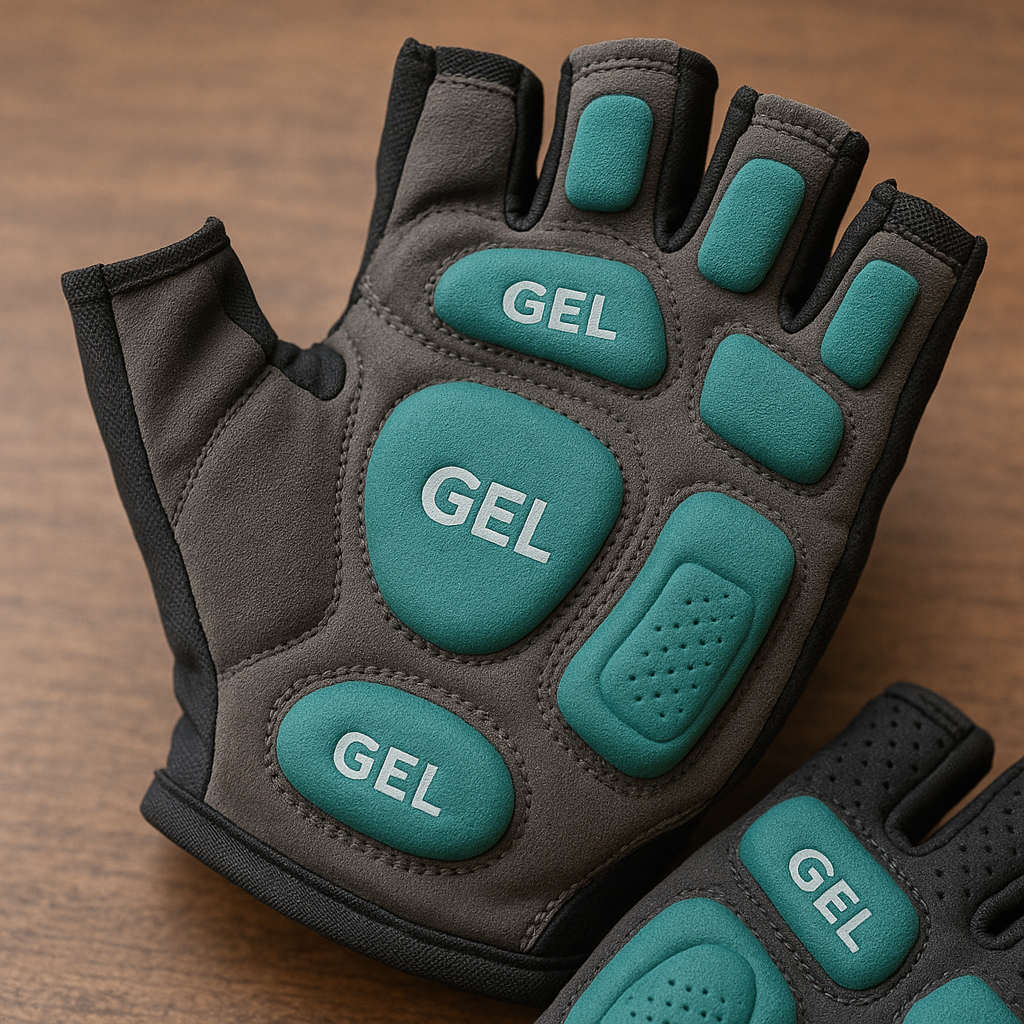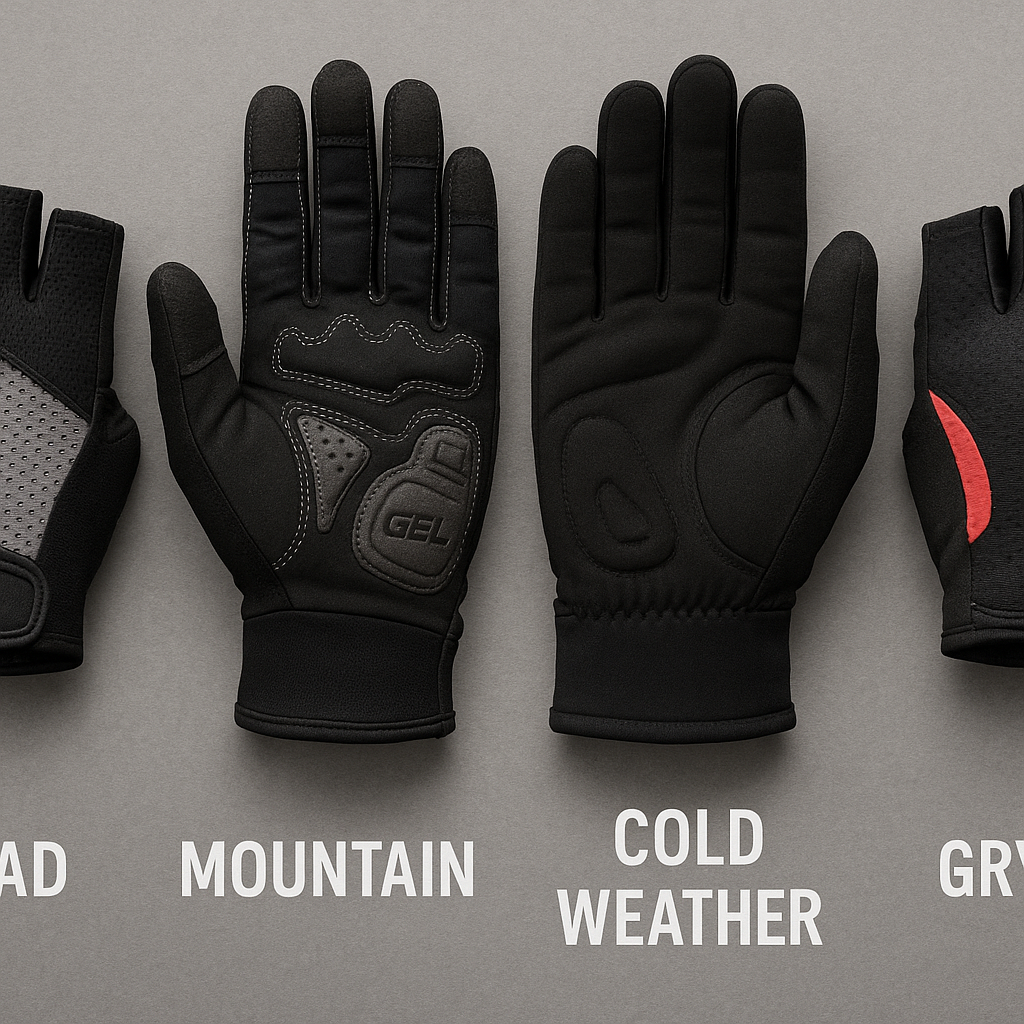Everyone knows that cycling gloves gel padded are crucial for a comfortable ride.
But what exactly sets gel-padded gloves apart?
This complete guide covers everything from padding placement and materials to choosing the perfect fit and style.
Some are designed with strategically placed gel to absorb shock without sacrificing grip.
Some offer breathability and moisture-wicking fabrics to keep your hands dry.
Some come with extras like touchscreen-friendly fingertips and reflective accents for safety.
Some protect your hands from injuries and prevent numbness during long, bumpy rides.
Some even combine vintage style with modern technology for a perfect blend of function and fashion.
Let's dive right in.
Why Choose Gel Padded Cycling Gloves?
Gel padded cycling gloves offer more than just basic hand protection. Their primary function is absorbing vibrations and shocks transmitted through the handlebars, which can cause hand fatigue, numbness, and discomfort during extended rides or over rough terrain.
The gel padding acts like a cushion, reducing pressure on sensitive nerves such as the ulnar nerve, which if compressed, can lead to numbness or ulnar tunnel syndrome. This is a common issue faced by cyclists, and choosing the right gloves can be a game changer for road and mountain bikers alike (source).
Unlike foam padding, gel maintains its shock-absorbing qualities even after prolonged use, making gel-padded gloves a worthy investment for serious riders. The padding is typically positioned under the base of the fingers and the heel of the palm—areas that experience the most pressure against the handlebar.
With gel padding you not only get cushioning but also enhanced grip and control on your bike, ensuring safety even in wet or slippery conditions.
Did you know? Wearing quality gel padded gloves can prevent the painful development of calluses caused by pressure, friction, and sweat during rides.

What Makes Gel Padded Gloves Different From Regular Gloves?
While standard cycling gloves might protect your hands from abrasions and offer some comfort, gel padded gloves provide a specialized form of cushioning designed to address specific cycling injuries and discomforts.
- Shock Absorption: Gel inserts absorb vibrations from uneven surfaces and rough trails, which foam padding struggles to do over time.
- Ergonomic Padding: Strategically placed gel pads reduce nerve compression by avoiding areas sensitive to carpal tunnel syndrome and ulnar nerve irritation (source).
- Durability: Gel holds up to wear better than foam, maintaining cushioning and support for longer rides and efforts.
- Grip Enhancement: Some gloves combine gel pads with silicone patterns on the palm or fingertips to prevent slippage, even when sweating or wet.
- Breathability & Comfort: The back of many gel padded gloves features breathable meshes or stretch fabrics for moisture-wicking and ventilation.
These features create a glove that's more than a simple barrier between skin and handlebars; they actively improve your endurance, control, and safety on the road.
What Are the Main Types of Gel Padded Cycling Gloves?
Choosing the right style depends largely on your riding style, weather conditions, and personal comfort preferences.
Here’s an overview of the most common types:
Fingerless (Half-Finger) Gel Padded Gloves
These gloves are popular among road cyclists and summer riders. They provide excellent ventilation to keep hands cool and allow easy access to brake and gear levers with full dexterity.
Gel pads on the palm reduce fatigue and protect against numbness, without bulk over the fingers. They are ideal for warmer climates or rides that require frequent hand adjustments.
One beautifully crafted example is the crochet gel padded glove made of breathable cotton and natural leather with gel inserts, combining vintage aesthetics and modern comfort (source).
Full-Finger Gel Padded Gloves
Offering complete finger coverage, these gloves are suited for cold weather, muddy trails, or downhill rides where hand protection from debris and abrasions is critical.
The gel padding cushions impacts over rough terrain and prevents vibration injuries, while the full coverage retains warmth.
Lobster Style and Hybrid Gloves
Designed for colder weather, lobster gloves group fingers to retain warmth but maintain enough dexterity. These also have gel padding in the palms.
How to Choose the Best Gel Padded Cycling Gloves?
Selecting gloves is more than picking gel padding; fit, material, and features determine the comfort and effectiveness of your gloves.
1. Fit and Comfort
Your gloves should fit snugly without being too tight to restrict blood flow. Look for stretchy fabrics like Lycra or microfiber that contour your hand while ensuring freedom of movement.
Excess material or poor fit may cause slippage, which lessens the effectiveness of gel padding and can cause chafing.
2. Padding Placement and Thickness
Gel pads should be ergonomically placed where hands experience pressure points on handlebars, without obstructing grip.
Thicker gel pads maximize cushioning but may reduce handlebar feel, while thinner pads favor control over comfort. Consider your riding type when choosing.
3. Breathability and Moisture Management
Sweat buildup leads to slippery grips and discomfort. Gloves with breathable mesh backs and moisture-wicking materials will keep your hands dry and cool uneven weather.
4. Grip Enhancement
Look for silicone palms, textured grips, or natural leather sections offering friction to improve control, particularly when hands are sweaty or in wet conditions.
5. Extra Features
- Touchscreen Compatibility: Allows you to operate devices without removing gloves.
- Adjustable Closures: Velcro wrist straps enable a secure, customizable fit.
- Sweat Wipe: Soft terry cloth on the thumb to wipe away sweat during rides.
- Reflective Elements: Safety enhancement for low-light conditions.
What Are the Health Benefits of Gel Padded Cycling Gloves?
Beyond comfort, gel padded gloves actively protect your hands and improve overall riding safety.
Dr. Story, a chiropractor with over two decades of experience, notes that gel padding prevents carpal tunnel and ulnar tunnel syndromes by cushioning the nerve-sensitive regions of the palm ().
Long rides transmit persistent vibrations through handlebar grips, which compress nerves and cause numbness, tingling, or fatigue. Gel padding absorbs these forces, reducing the risk of such nerve pain.
Additionally, gloves protect your hands in falls; they safeguard your skin from abrasions and reduce the risk of cuts and bruises.
The soft sweat wiper prevents sweat dripping into your eyes, helping you maintain clear vision and focus during intense rides.
How to Care for and Maintain Your Gel Padded Gloves?
Proper care extends the life and effectiveness of your gloves.
Most cycling gloves, including gel padded models, can be hand washed in cool water with mild detergent. Avoid bleach, fabric softeners, and hot water, as these can damage the padding and fabric.
Always air dry them flat or hanging out of direct sunlight. Machine washing is possible if manufacturer instructions allow, but it might reduce glove lifespan.
Regularly check the gel pads and stitching for wear and tear. Replace gloves when padding becomes compressed or ineffective to maintain adequate protection.
Which Gel Padded Gloves Fit Different Riding Styles Best?
Not every gel padded glove suits every type of rider. Different uses require tailored features.
Road Cyclists and Commuters
Fingerless gel padded gloves provide breathability and control. Lightweight fabrics with gel cushions reduce hand fatigue over hours on smooth or uneven pavement.
Mountain Bikers and Trail Riders
Full finger gel padded gloves offer extra protection from brush, rocks, and abrasions. Padding absorbs shocks from rough terrains, and tough backing fabrics add durability.
Casual Riders and Weekend Warriors
Simple gel padded gloves with moderate cushioning offer comfort and protection for occasional rides without excess bulk.
Cold Weather Cyclists
Look for gel padded lobster or insulated full gloves that keep your hands warm but retain essential vibration cushioning.

How Do I Know If My Cycling Gloves Are Actually Helping?
Ask yourself a few simple questions: Do your hands feel less numb or tired during and after rides? Is your grip more secure, even in damp conditions? Do you notice fewer calluses or skin irritations?
If you answer yes, your gloves are doing their job. Conversely, persistent discomfort, slipping grip, or aching palms could indicate that your gloves lack sufficient padding, aren’t fitting correctly, or the padding has worn out.
Quick Tip: You should feel cushioning but still maintain excellent control over your handlebar movements. If padding feels bulky or restricts movement, consider a different style or size.
Comparison Table of Top Gel Padded Cycling Glove Features
| Feature | Fingerless Gloves | Full Finger Gloves | Lobster Style Gloves |
|---|---|---|---|
| Gel Padding Location | Palms and below fingers | Palms, fingers, and knuckles | Palms, fingers grouped together |
| Best For | Road & summer riding | Cold weather, mountain biking | Cold and wet weather |
| Breathability | High | Moderate | High to moderate |
| Protection Level | Medium | High | High |
| Additional Features | Touch screen, sweat wipe | Insulated, abrasion resistance | Warmth with dexterity |
Can Gel Padded Cycling Gloves Improve Performance?
Yes, by reducing hand fatigue, numbness, and discomfort, gel padded gloves allow cyclists to maintain better control and longer focus. This translates into improved bike handling, especially in technical sections or long-distance rides.
Less vibration means more energy conserved and less distraction due to discomfort. Therefore, gel padded gloves contribute indirectly to better speed, endurance, and safety.
Plus, the confidence of secure grip prevents unnecessary braking or correction maneuvers, smoothing your ride flow.
Frequently Asked Questions About Cycling Gloves Gel Padded
- How often should I replace my gel padded cycling gloves?
- Depending on use, replace gloves every 6-12 months or sooner if gel padding compresses or stitching weakens.
- Are full-finger gel padded gloves suitable for summer?
- Generally not, as they reduce ventilation; opt for fingerless or lightweight materials in hot weather.
- Can gel padded gloves help with numbness in hands?
- Yes, gel absorbs vibrations and reduces nerve pressure that causes numbness and tingling.
- Can I machine wash gel padded gloves?
- Check manufacturer instructions; many allow gentle machine wash, but hand washing is safest to preserve padding.
- Do gel padded gloves work for mountain biking?
- Absolutely; full finger versions offer both protection and cushioning on rough terrain.
Let's Wrap Up: Why Gel Padded Cycling Gloves Are Worth It
Gel padded cycling gloves are more than just an accessory; they are a vital tool for comfort, injury prevention, and performance enhancement. Whether you ride aggressively on mountain trails or cruise along country roads, the cushioning and grip they provide can transform your experience.
From protecting nerve-sensitive areas to improving your control under wet or sweaty conditions, investing in a pair of quality gel padded gloves means fewer aches, better safety, and longer enjoyment on your bike.
Ready to select your next pair? Explore detailed buying advice and options tailored to your ride style in our expert guides, or browse our carefully curated selection of gloves, which includes options with breathable mesh, elegant crochet designs, and reinforced leather grips (aerotechdesigns.com).
Curious about other must-have gear that boosts your outdoor comfort? Check out our post on choosing the best cordless vacuum for pet hair for household comfort hacks, or dive into maximizing work comfort with an adjustable standing desk for workspace well-being.
What's Your Next Step?
Tell us in the comments: How will you apply this to your cycling routine? To explore our full selection of cycling gloves gel padded, visit our main blog page and stay tuned for more cycling comfort tips and gear reviews.






